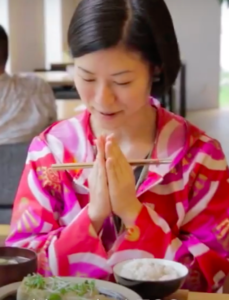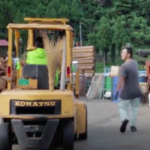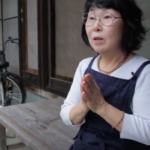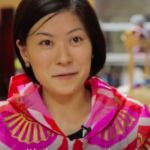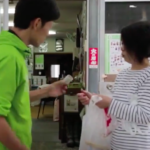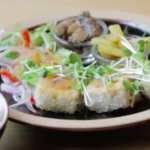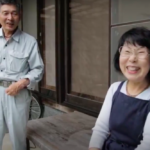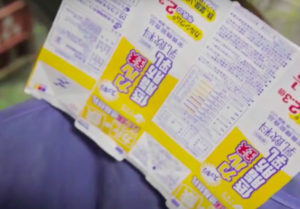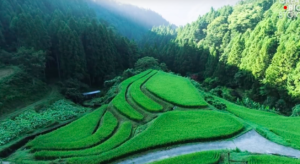 The will of 1700 people who are living in Kamikatsu town and they just happened to create an initiative seeking zero-waste town by the year 2020, Kamikatsu is currently at 80% full recycling and 20% goes to the landfill yet a “zero waste” town is their target, all household waste is separated into 34 different categories and sent to be recycled. In 2008, a poll showed that 40% of residents were still unhappy about the aspect of the policy that required items to be washed. But the town continues the policy as it is cheaper and more environmentally friendly than purchasing an incinerator. The town has set a goal to become fully zero waste by 2020.
The will of 1700 people who are living in Kamikatsu town and they just happened to create an initiative seeking zero-waste town by the year 2020, Kamikatsu is currently at 80% full recycling and 20% goes to the landfill yet a “zero waste” town is their target, all household waste is separated into 34 different categories and sent to be recycled. In 2008, a poll showed that 40% of residents were still unhappy about the aspect of the policy that required items to be washed. But the town continues the policy as it is cheaper and more environmentally friendly than purchasing an incinerator. The town has set a goal to become fully zero waste by 2020.
Nothing to be burned in the incinerator, how they do this?燃やす無し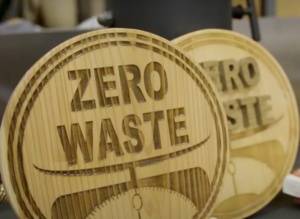
In case you didn’t notice this 80% recycling initiative started back in 2003 so people change and mentality, strong will, and respect doesn’t change just for the objective of having and living in the cleanest environment ever.
Mr.Takeichi is a shop owner and he is using a very definitive strategy, usi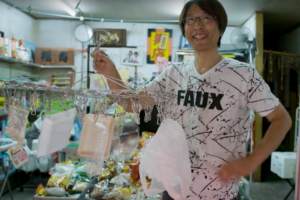 ng arrangement, drying out used items after washing then recycling.
It takes some time and he knows the cost of wasting time doing that yet he believed in a hygienic environment for him and his family.
ng arrangement, drying out used items after washing then recycling.
It takes some time and he knows the cost of wasting time doing that yet he believed in a hygienic environment for him and his family.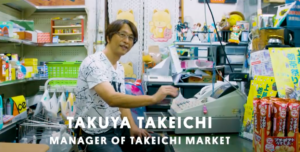
Not only Takeichi san but everyone in the neighborhood is doing so in collaboration! 連携こと
Splitting things into 34 categories require washing, peeling out covers, folding out milk packs, and even taking out the cab from the pet bottle, it isn’t easy yet so efficient.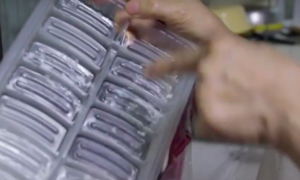
What are those 34 categories that they deal with everyday! 分別こと
- First is aluminium cans recycled to aluminium cans.
- 2nd is the steel cans
- 3rd is spraying cans
- 4th is the metal caps -The metal items are recycled and sold as metals. 48 tonnes of total metals sold in 2014 by the total population of Kamikatsu which was ~1700.
- 5th is clear glass bottles
- 6th is white glass bottles which is melted
- 7th is the big bottle like the sake bottles which is washed and reused
- 8th is other color bottles are separated as per colors and they are melted and recycled.
- 9th includes glass caps or mirrors or ceramics or window glasses (not the bottles but the rest) Its crushed and downcycled and used in construction material. This process comes with a cost so the Town governing organization has to pay for this as using new material is cheap compared to reprocess expense.
- 10th Batteries – It is one of the most expensive and hazardous recycling materials. Metal is again used and the chemical is taken out. Solution is to use rechargeable batteries
- 11th, 12th and 13th are around the Light bulbs category- They separate the metal part so they are not together with glass. Use high quality LED instead and they consume less electricity compared to the regular light bulbs. Includes tube-light
- 14th is broken light bulbs
- 15th is the clean white plastic trays. other colors come in a different category. They are recycled. Better not to buy products coming in plastic packaging. Use your own box, for buying veggies, breads, meats.
- 16th is old clothing and curtains Kamikatsu has its Kurukuru craft center and Kurukuru shops where the fabric and accessories are upcycled to new products. So basically people in Kamikatsu can bring in whatever they don’t use anymore to the shop and then leave it there. Then whoever comes to the shop can take it for free if you want it. You have to mention the kilogram weight of clothes taken or given, so that we know what is the quantity of waste created in city.
- 17th is paper packs for milk, juices and alcohol in Japan. Recycled as paper packs, wash it before giving at center.
- 18th Brown card board – recycled as card board and gets sold.
- 19th is newspaper – recycled and sold back as paper for newspaper.
- 20th magazines and small piece of paper – As magazine pages are glued together, they cant be recycled to same quality material but it is downcycled as a lower quality paper.
- 21st is wooden chopsticks. Some of the wooden chopsticks are brought into the paper companies to be made into paper from the wood. Rest is used as fire source.
- 22nd is PET plastic bottles. It cost a lot of energy for the recycling and the plastic can be only recycled once it’s cleaned. Alternative is biodegradable plastic. It can be composted though it takes longer than other organic material but atleast is not a hazard.
- 23rd is The cap of the plastic bottles. It is recycled
- 24th is lighter. They are reusable – metal part can be sold & the plastic one is reused.
- 25th is mattress and carpets. Sleeping carpets or the mattress or normal carpets. Its difficult to recycle with all those plastic and chemicals used to fuse the material together. Buy carpets which are made from recycled materials.
- 26th is paper nappies/diapers both for the babies and adults. They get incinerated, get burnt separately. There is a technology of separating the materials and downcycle the paper and plastic part. But the expense involves make sense for a bigger population. Kamikatsu is producing energy through incineration. G diapers have reusable outside diaper and flush-able inside.
- 27th is used kitchen oil. and the plastic bottle which comes as container. Buy in your pot. And try to reuse the oil more than once in cooking. The used oil is reused in fertilizer.
- 28th is plastic packaging which is recycled if it is clean
- 29th is anything which has no alternative but burnt. Gum product. Lasers. Gum boots, bags, shoes. incineration temp is very high and it burns everything. Ash goes as landfill.
- 30th is all tires. People who bring tires are charged a fee so that the tires are sent to car dealers. Normally in Japan tires are collected by car factories or the car dealers then they alone are responsible for like recycling or dealing with the waste.
- 31 is leisure sized waste. Furniture, desks, big things are collected with a fee. They are sorted based on material. Recycled if wood, sold if metals, etc. Most of the things are re-used by other people.
- 32 is the electric products like refrigerators, ACs or washing machines. Giving them away comes with a fee because it gets collected by the producers but we need to pay for the collection.Most of the new ones produced are not that harmful.
- 33 is organic wast/ food waste – they have two options, either buy a composting machine or put your organic waste into your own farms or the gardens. People who bring the thrashed down product doesn’t smell bad and within 2-3 days it becomes perfect soil.
- 34th is a kind of plastics or the bottles for the agriculture, which carries the greenhouse gas and agriculture chemicals.
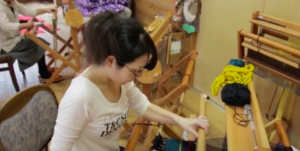

Recycling factory to turn recyclable into clothes and toys for childern day
Who doesnt like free stuff, and this factory is leaded by a young japanese lady who is manufucturing garments out of recyclables and she is always wearing out of those products. “I can make a kimono out of an old flag”, She said.Food remnants is a responsibility in the town! 食べ残し無し
